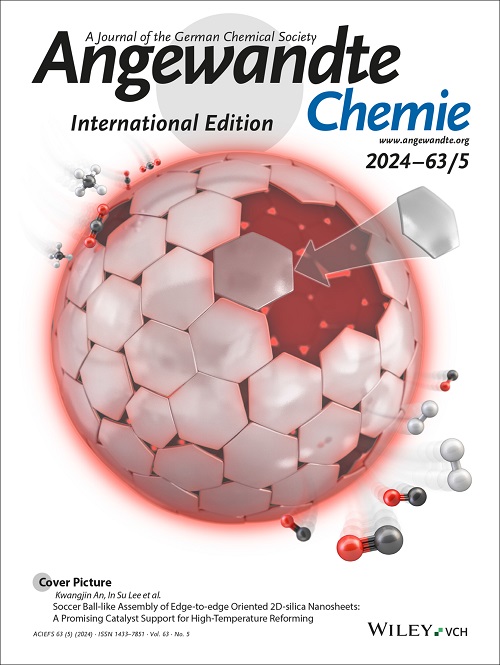Controlled Growth of Oligophenylene‐Structures on Graphene for Facile Secondary functionalization.
IF 16.1
1区 化学
Q1 CHEMISTRY, MULTIDISCIPLINARY
引用次数: 0
Abstract
Functionalization of graphene derivatives is a common approach to tune material properties for use in various applications. Due to the low reactivity of the unsaturated carbon lattice of graphene, not only are few chemical approaches suitable for successful functionalization, such as those involving highly reactive in situ formed radical species or nitrene and carbene compounds, but also the degree of functionalization is usually limited, modifying only a few percent of the carbon atoms. Typically, uncontrolled side reactions such as homocoupling and oligomerization of newly introduced functional groups can occur instead of direct coupling to the carbon lattice. We want to turn this unwanted side reaction into an advantage and use intentionally formed covalent dendrimeric oligophenylene structures for secondary functionalization. We show that these oligomeric structures can be grown to specific thicknesses and used for further functionalization with bromomethyl groups at high density on the surface. This functionalization opens further avenues for subsequent nucleophilic substitution, as exemplified by the introduction of versatile azide, nitrile, and phosphonate groups. The results presented here are not only applicable to large oligophenylene structures, but also demonstrate that, in principle, single aryl moieties on graphene of any size and density can be successfully functionalized.求助全文
约1分钟内获得全文
求助全文
来源期刊
CiteScore
26.60
自引率
6.60%
发文量
3549
审稿时长
1.5 months
期刊介绍:
Angewandte Chemie, a journal of the German Chemical Society (GDCh), maintains a leading position among scholarly journals in general chemistry with an impressive Impact Factor of 16.6 (2022 Journal Citation Reports, Clarivate, 2023). Published weekly in a reader-friendly format, it features new articles almost every day. Established in 1887, Angewandte Chemie is a prominent chemistry journal, offering a dynamic blend of Review-type articles, Highlights, Communications, and Research Articles on a weekly basis, making it unique in the field.

 求助内容:
求助内容: 应助结果提醒方式:
应助结果提醒方式:


